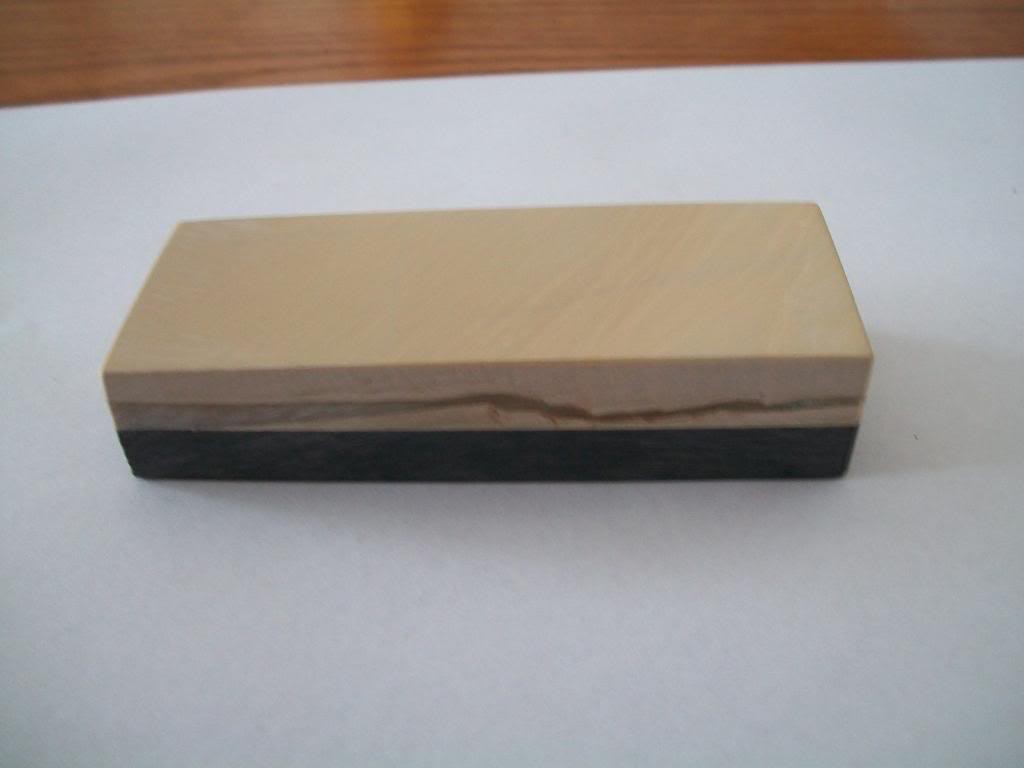Results 1 to 10 of 23
-
05-16-2010, 05:49 PM #1
 Why is this lapping taking sooo long???
Why is this lapping taking sooo long???
I am trying to get my coticule lapped with 220 grit 3m wet/dry sand paper. Most of the stone is flat but the corners on both ends still seem to slope downward.

I have followed the tutorials on lapping marking the surface with a grid and moving the stone in a circular motion. At first, I used 320 grit because it was the closest I could find then I found some 220 at an auto parts store. I have made progress as the corners that were left with pencil marks have gotten smaller. But they are still there!
I have worked on this thing for over three hours total...does this sound right? The corners didn't seem to slope that much to the naked eye (it actually looked nice and flat to my optimistic imagination ).
).
So my question is, "do I just keep going or is something wrong with my method or my stone?"
-
05-16-2010, 05:51 PM #2

If I have some areas which are just not going down I try to apply more pressure on those areas.
-
The Following User Says Thank You to sproosemoose For This Useful Post:
pstrjp (05-16-2010)
-
05-16-2010, 05:59 PM #3

If the corners are sloping downward more needs to come off from the center out. When I have run into that I have looked at my pencil grid and gotten what I needed of the actual area used for honing flat. I let the corners slope if they are not in the area making blade contact. Eventually over years,with continued honing and lapping it will get there. I only take off what I have to in a situation like that.
Be careful how you treat people on your way up, you may meet them again on your way back down.
-
The Following User Says Thank You to JimmyHAD For This Useful Post:
pstrjp (05-16-2010)
-
05-16-2010, 06:01 PM #4
-
05-16-2010, 06:03 PM #5
-
05-16-2010, 06:06 PM #6Senior Member


- Join Date
- Mar 2009
- Location
- home for the last 28 years is switzerland
- Posts
- 312
Thanked: 48
keep your pressure light and in the center of the stone let the sandpaper do the work too much pressure will only clog the paper. tape that sand paper down flat, if the rounded off corners are not too large your razor wont touch them anyway.
-
05-16-2010, 06:15 PM #7

Well yes but I am not saying that. If your pencil grid shows that most of the stone is flat but the corners are sloped out towards the end of the stone it may not be necessary to continue until all is on the same plane.
We are just trying to get a flat honing surface. If I've got plenty of stone to hone on that is flat I won't bother seeking perfection in going beyond what I've already removed for the sake of absolute flatness. Here is a pic of 4 Eschers. The stone at the top and the stone at the bottom are sloping in the corners but I don't hone there so I'm not worried about it. If I needed to use that part of the stone I would keep on until it was flat.Be careful how you treat people on your way up, you may meet them again on your way back down.
-
05-16-2010, 06:16 PM #8

if i were you i wouldn't worry about it. it is small stone you most likely end up using x strokes and you will never touch corners.
your stone shouldn't be perfect flat anyway.
hope this helps.
-
05-16-2010, 07:55 PM #9

What is the substrate the paper is on?
Where did you learn to make circular motions. Sometimes circles are ok but imho most prone to inaccuracy.
I would agree that the corners are not all that important.
-
05-16-2010, 08:21 PM #10

The closer you get to lapping the stone flat the longer it takes to lap the higher areas down. This is because you have a flat area that gets larger as you remove material. It can take forever to reduce the whole surface enough to eliminate a rounded corner (as you know). I wouldn't worry about the corners. After you radius the long edges of the stone you will have a honing surface that is very slightly curved inward at the ends where you don't use it anyway.


 LinkBack URL
LinkBack URL About LinkBacks
About LinkBacks






 Reply With Quote
Reply With Quote


